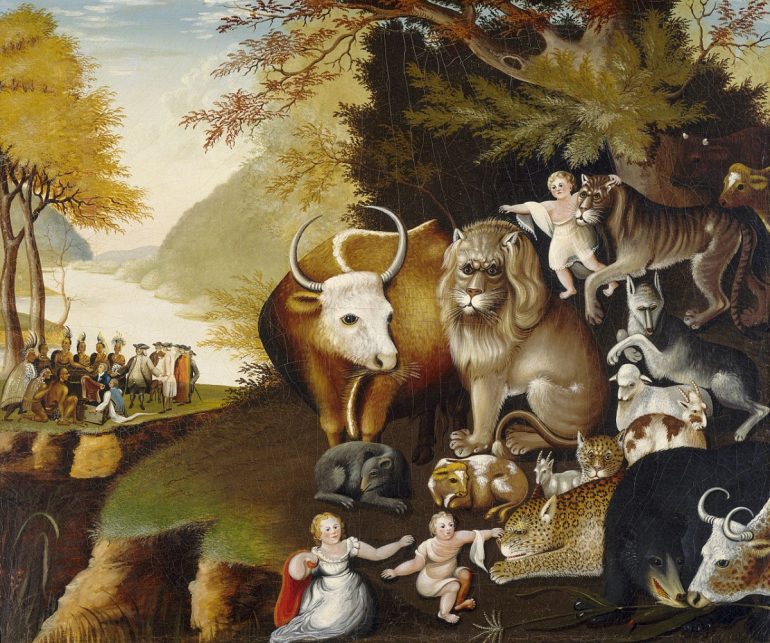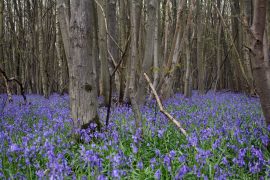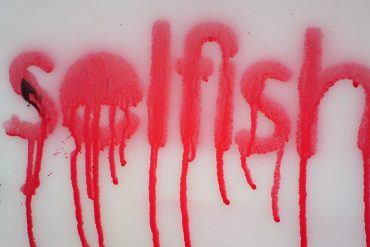Edward Hicks painted dozens of versions of his famous work The Peaceable Kingdom in the 1820s-1830s, The Peaceable Kingdom. He was a Quaker from Bucks County, Pennsylvania. The painting draws on two things. First Isaiah 11, particularly verses 6-8:
[openquote]The wolf shall live with the lamb,
the leopard shall lie down with the kid,
the calf and the lion and the fatling together,
and a little child shall lead them.
The cow and the bear shall graze,
their young shall lie down together;
and the lion shall eat straw like the ox.
The nursing child shall play over the hole of the asp,
and the weaned child shall put its hand on the adder’s den.[closequote]
Isaiah’s vision of a future paradise is one of a peaceable kingdom, filled with what seem like contradictions.
Second, in the background, Hicks illustrates his imaginings of the signing of the treaty of Pennsylvania with a group of Native Americans.
What makes Hicks’ painting so interesting today is what the foreground and background scenes communicate. The scene is a hopeful one, in which the human’s in the background are almost ushering in the prophetic image in the foreground. The animals and children sit together, still hidden by the tree, not fully in the open. It is only the possibility of happiness.[ref]This phrase was taken from the title of Alexander Nehemas’ book of the same name.[/ref]
The reality of the centuries which have passed since the 18-hundreds has not fulfilled this hopefulness, and has often looked more like despair. The reality of what was to come, the treatment of Native Americans, their relocation and isolation from the natural places they inhabited for centuries, and the march of the westward expansion of the United States across the virgin land is a much different painting. War. Pollution. Disease. Invasive species. Resource depletion. A cycle has repeated itself that dulls the hope of this painting.
But the image from Isaiah 11 is still there, if only as a possibility we hope for.
Questions & Actions
- Read Isaiah 11 (it’s only 16 verses!). Then, sit in contemplation on the painting above. Where do you see markers of the hope of Isaiah 11? Where do you see elements of despair? In general, what moves you or frustrates you about this painting.
- The title given to Isaiah 11, like the title of Hicks’ painting, is The Peaceful Kingdom. Does it sound like your vision of a peaceful kingdom to you? Where do you think this vision is taking place, in a disembodied heaven or grounded in the material creation?
- Take some time today, or this week, to find a couple stories in the news of both despair and hope for creation. Your goal is to find two kinds of stories: a story of how we humans have in some way messed up our relationship with creation that has caused harm and a story of hope for how people are working to make our relationship with creation better, are choosing to be active agents of the hope of Isaiah 11. Share what you’ve found below.





